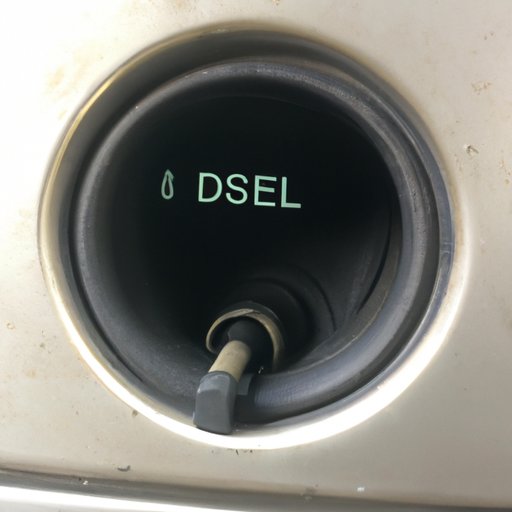Introduction
Diesel fuel is a type of fuel used in diesel engines. It is made from petroleum and is composed of hydrocarbons and other compounds that help to lubricate the engine components, reduce emissions, and increase engine efficiency. There are many reasons why a diesel engine may run out of fuel, such as leaving the fuel tank empty for too long or a clogged fuel filter.

Checking the Fuel Filter and Replacing if Necessary
The first step in starting a diesel engine after running out of fuel is to check the fuel filter. A clogged fuel filter can prevent fuel from flowing freely to the engine and cause it to run out of fuel. To identify a clogged fuel filter, look for signs such as poor engine performance, black smoke coming from the exhaust, and difficulty starting the engine. If the fuel filter is clogged, it must be replaced before attempting to start the engine.
To replace the fuel filter, first locate the fuel filter on the engine. It is typically located near the fuel tank. Once the fuel filter is located, disconnect the fuel lines from the filter and remove the old filter. Install the new filter and reconnect the fuel lines. Make sure the connections are secure before continuing.

Filling the Fuel Tank with Diesel Fuel
Once the fuel filter has been checked and replaced, if necessary, the next step is to fill the fuel tank with diesel fuel. It is important to use the correct type of diesel fuel for the engine. Refer to the owner’s manual for the recommended type of diesel fuel for the engine. When filling the fuel tank, make sure to do so slowly and carefully to avoid spilling fuel.
Priming the Fuel System
After the fuel tank has been filled with diesel fuel, the fuel system must be primed before attempting to start the engine. To prime the fuel system, locate the manual primer pump. This is typically located near the fuel filter. Place the primer pump over the fuel line and press down firmly several times until fuel starts to flow through the fuel lines.

Turning the Ignition Key to the “On” Position
Once the fuel system has been primed, the next step is to turn the ignition key to the “on” position. If the engine is equipped with a glow plug light, wait until the light goes off before cranking the engine. This indicates that the glow plugs have heated up and are ready to ignite the fuel.
Cranking the Engine Until it Starts
The final step in starting a diesel engine after running out of fuel is to crank the engine until it starts. To do this, turn the ignition key to the “start” position and hold it there until the engine starts. If the engine does not start, troubleshoot the issue by checking the fuel filter, fuel lines, and spark plugs.
Conclusion
Starting a diesel engine after running out of fuel can be a daunting task, but it doesn’t have to be. By following the steps outlined above, anyone should be able to get their diesel engine running again. The steps include checking the fuel filter, filling the tank with diesel fuel, priming the fuel system, turning the ignition key to the “on” position, and cranking the engine until it starts. With a little patience and knowledge, anyone should be able to get their diesel engine running again.
(Note: Is this article not meeting your expectations? Do you have knowledge or insights to share? Unlock new opportunities and expand your reach by joining our authors team. Click Registration to join us and share your expertise with our readers.)
